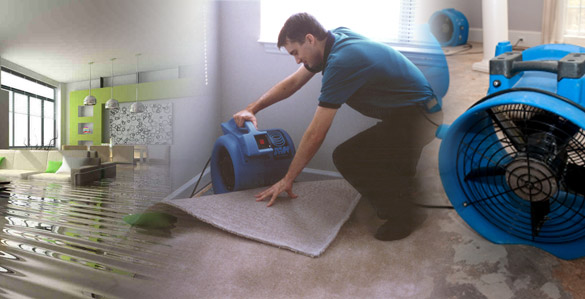When your home experiences water damage, one of the crucial steps in the recovery process is proper drying; running fans is a common practice to expedite the drying of affected areas. However, determining how long you should run fans after water damage depends on various factors, including the extent of the damage, the materials affected, and the climate conditions. We will explore the considerations that influence the duration of fan operation after water damage and guide you to help you make informed decisions.
Considerations that influence the duration of fan operation
● Understand the Importance of Drying:
Before delving into the specifics of fan operation, it’s essential to recognize why proper drying is critical after water damage. Failing to dry affected areas adequately can lead to lingering moisture, which, in turn, promotes mold growth, structural damage, and potential health hazards. Effective drying not only prevents these issues but also aids in the overall restoration process.
● Assess the Extent of Damage:
The first step in determining how long to run fans is to assess the extent of the water damage. Is the damage confined to a small area, such as a single room, or has it affected multiple rooms and levels of your home? The more extensive the damage, the longer you may need to run fans to ensure thorough drying. Larger areas typically require a more extended drying period.
● Consider the Types of Materials:
Different materials have varying moisture retention levels. For example, drywall, carpet, and insulation can trap moisture and take longer to dry than non-porous materials like hardwood floors or ceramic tiles. Understanding the composition of the affected materials can help you gauge how long fans should run in each area. It may be necessary to focus additional drying efforts on porous materials.
● Factor in Humidity Levels:
The humidity levels in your home and the surrounding environment play a significant role in drying. High humidity slows the evaporation rate, meaning you may need to run fans more to achieve thorough drying. In humid climates, fans may need to operate for a more extended duration compared to dryer regions.
● Utilize Moisture Detection Tools:
To ensure you are not prematurely discontinuing fan operation, consider using moisture detection tools like moisture meters or hygrometers. These devices can provide accurate readings of moisture levels in materials and the air. Monitoring moisture levels helps you determine when it is safe to stop using fans, ensuring that no hidden moisture pockets remain.
● Follow a Gradual Reduction Approach:
Instead of abruptly halting fan operation, adopting a gradual reduction approach is advisable. As you monitor moisture levels and notice a consistent decrease in humidity and moisture readings, you can slowly reduce the number of fans in use. This method allows you to maintain the drying progress while preventing setbacks due to prematurely ceasing fan operation.
● Seek Professional Guidance:
In complex or severe water damage scenarios, seeking the guidance of water damage restoration professionals is highly recommended. They possess the expertise and equipment to assess the situation comprehensively. Professionals can provide a more accurate estimate of how long fans should run based on your home’s unique conditions and the damage’s extent.
● Account for Safety:
While it is essential to ensure thorough drying, safety remains a paramount concern. Avoid overloading electrical circuits or creating hazardous situations by running too many fans simultaneously. Safety should always come first; if you have concerns about electrical systems, consult an electrician or restoration professionals.
● Monitor the Drying Progress:
Throughout the drying process, monitor the progress closely. Keep an eye on moisture levels, inspect materials for indications of dampness or mold growth, and take action if you notice any areas that mandate additional attention. Effective monitoring ensures that you achieve the desired level of dryness.
● Be Patient:
Lastly, it’s important to exercise patience when dealing with water damage. Rushing the drying process can lead to incomplete drying and potential long-term issues. While it may be tempting to stop fan operation as soon as the visible signs of water are gone, remember that residual moisture can linger. Taking the time to ensure thorough drying is an investment in your home’s long-term health and integrity.
Determining how long you should run fans after water damage is not a one-size-fits-all answer. It depends on various factors, including the extent of the damage, the materials involved, humidity levels, and the effectiveness of your drying efforts. Proper drying is paramount for stemming mold growth, structural damage, and health hazards, so it’s crucial to balance practicality and thoroughness. By considering these factors and following a gradual reduction approach, you can make informed decisions about fan operation and ensure a successful recovery from water damage. For water damage remediation in Vancouver, WA, it’s essential to rely on experienced professionals who understand the unique challenges posed by the Pacific Northwest climate.

